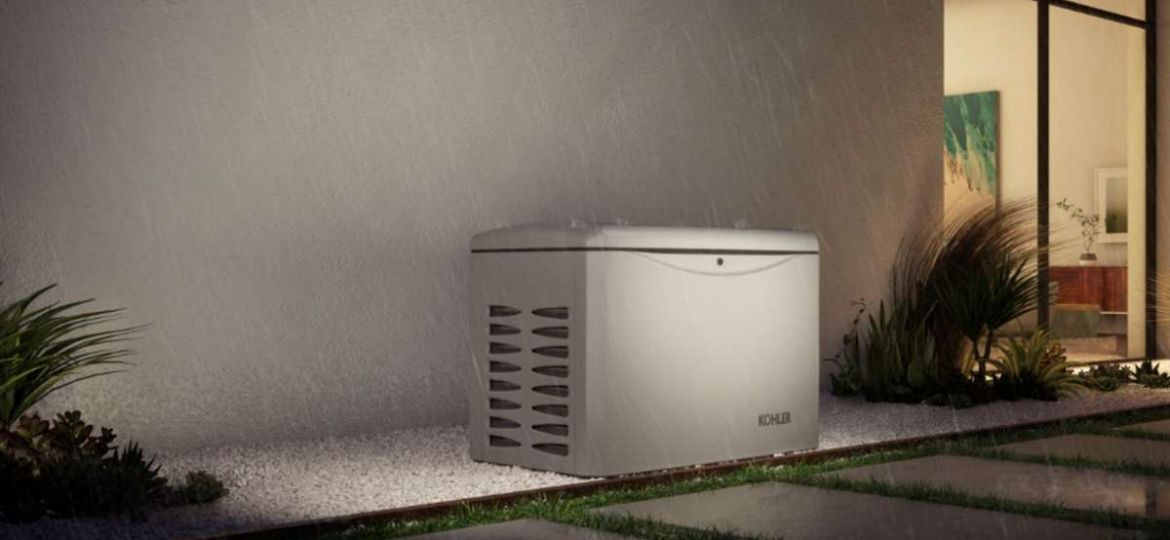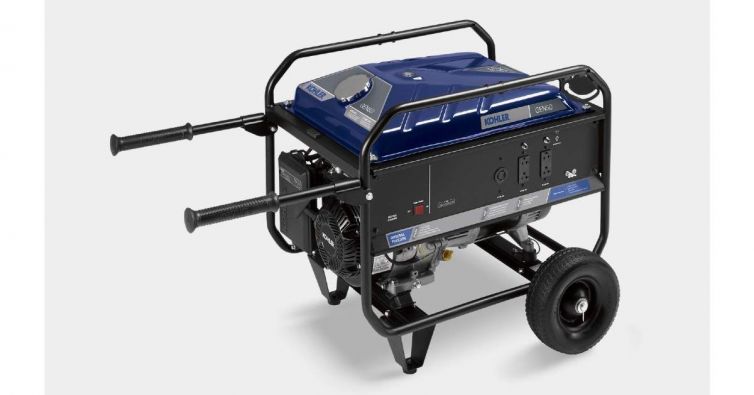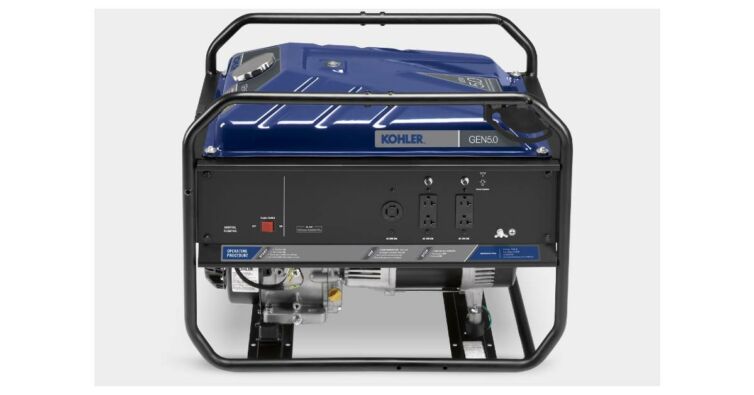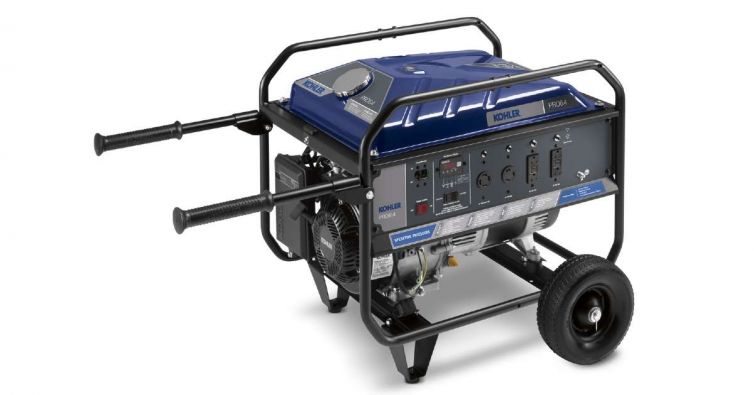Whether you live in a frequent storm area or plan to live far from urban centres and off the grid, a generator for home can be an essential tool when you need power for comfortable living or when in an emergency. Nobody wants to come home to a refrigerator full of spoiled food, a frozen home, or to be left without water. If you are looking to buy a generator for home you are in the right place to understand the implications and options for your purchase.
This article will help you understand the particularities of a generator for home. We will look into your purchase options on the types of generators to buy based on your actual needs, price and maintenance costs. After reading through you will be able to evaluate your investment and will gain general recommendations for maintenance to ensure safe and efficient operation.
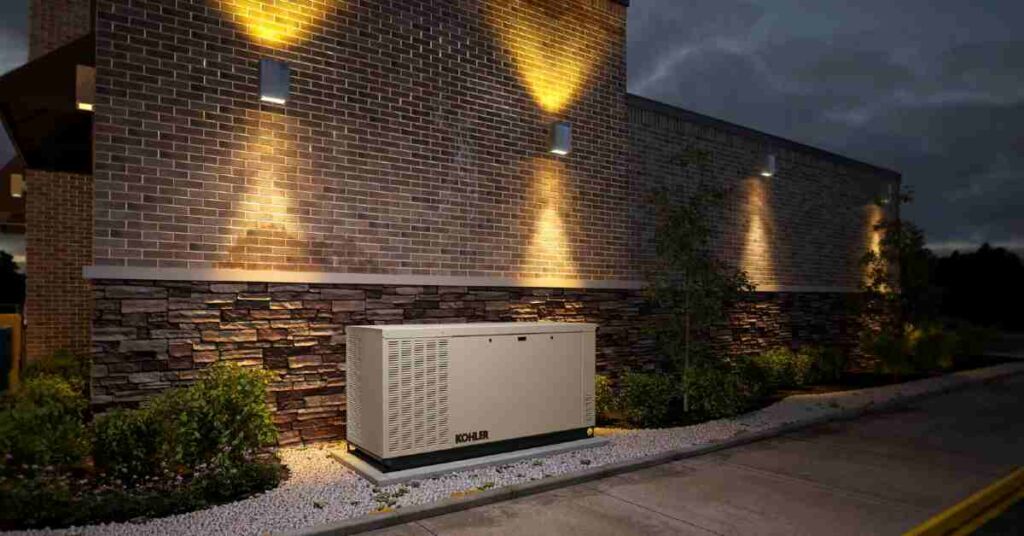
There are numerous ways you and your family can be affected by a power outage. From severe weather and natural disasters to an overloaded power grid due to ageing and population expansion, which is ever more frequent. Electricity once considered a luxury is now an absolute necessity. Without it, it’s impossible to live our lives as we know it.
To evaluate and consider the purchase of a generator for home, it is important to understand how it is built and what are its operating principles.
The main components of a regular engine driven standby generator are outlined below in the following video.
- Motor: Provides mechanical energy that is converted into electrical energy. The type and size of the engine determine the fuel consumption and power output of the generator.
- Generator: converts mechanical energy into electricity.
- Fuel Supply System: Consists of a fuel tank, supply lines and other components such as diesel fuel pump, fuel filter, a nozzle and injectors.
- Lubrication: ensures smooth operation and slows down the wearing out of the machine; typically stored in a sump or reservoir.
- Cooling system: Consists of a cooling pump, coolant, and a radiator (heat exchanger) with a fan to dissipate heat.
- Starting System: Starts the engine and generator.
- Exhaust System: Captures and directs exhaust gases to an appropriate location where it is treated (for eg: emissions control) and final dissipation.
- Control Panel: Contains devices, including the system controller, to manage and monitor generator operation from initial start-up through steady-state operation and shutdown. Monitored generator functions include oil pressure and coolant temperature, as well as current, voltage and frequency.
- Air Intake System: Directs and filters combustion air entering the engine.
- Batteries: Ensure that the generator kicks during a power outage.
- Battery charger: generally connected to the mains and keeps the batteries charged.
All of the above components function with a system controller that monitors and controls operation from initial startup through steady-state operation and shutdown.
Types of generators for home
A generator for home is a completely off-grid stand-alone electrical system that powers your home. The degree of power it offers ranges from simply keeping the lights on to powering your entire home at full strength, depending on the type and size of the unit.
There are two types of home generators:
- Standby generators.
- Whole house generators.
The standby generator is a backup power supply that provides electricity to your home in the event of a power outage. There are two main types: standby generators, which have a trigger that turns on automatically in the event the main power supply is cut; and portable generators, which also supply emergency power but must be operated manually.
Standby generators are usually permanently and professionally installed and placed outdoors same as many other utility connections in a home. The generator is connected to home’s main utility panel and must be connected to the existing electrical system, hence the need for professional installation. Portable generators, on the other hand, do not require profesional installation.
Not a fan of a stanby generator that runs on fuel? Consider a portable or not portable power station, which is a type of generator that is powered by a rechargeable battery or solars panels. They’re usually a bit more pricy than standard stanby generators and you won’t have to worry about storing fuel… and they are more ecological.
Whole house generators, on the other hand, range in capacity from 22 to 48 kW. This type of devices have extra power, which gives you a peace of mind knowing you won’t have to make sacrifices or make tough decisions, such as choosing between using the single air conditioner or a full-size refrigerator. Instead in the event of a power outage, your house will be practically fully functional, same as on a regular day.
Whole house generators offer many benefits over the typical standby generator. They feature larger, more powerful engines that are liquid-cooled for longer maintenance-free run times. They have sophisticated programming for better load management, and provide more fuel options from natural gas, to LP and diesel.
Whole house generator benefits:
- Higher quality automotive style engine.
- Liquid cooled (on larger models).
- Reduced noise (lower RPM).
- Longer maintenance intervals.
- Backs up the whole house.
- Fuel efficiency.
How big a generator is Needed to Power a House?
There are many different sizes of generator for home to choose from. The one that’s right for you depends on what you’ll be using it for most often. If you need just a little power during an overnight camping trip, the smaller (and quieter) type of generator is the best option. Or if you’re hoping to keep your fridge cool during a brief power outage, standby generator or a portable generator will do just fine.
However, if you expect to have zero power outages, even during a major severe weather event, a whole house generator for home is what you are looking for. Despite the investment, it will be worth it if you have a prolonged blackout. Whole-house generators are costly, but are worth installing if you work from home, experience frequent or prolonged power outages, store a lot of cold food, or live in a climate where heating or cooling is essential. Generators can run for weeks with enough fuel and proper maintenance.
In addition to choosing the type of emergency generator for home that best suits your situation and budget, you’ll also need to calculate how much power you’ll need. A generator’s power supply is designated by watts, with more watts delivering more power.
How many watts you need for your generator depends on what you want to keep running. Each electrical power item in your home requires a certain amount of power to turn on (start-up or “surge” wattage) as well as to keep running, with about 5,000 watts needed to power an average home.
If you prefer to buy strictly the number of watts you need, check all items and add up the required wattage. Then buy a generator that can accommodate it. For example, a refrigerator requires about 800 watts of power, your phone charger about 20 watts, and your air conditioner about 1,000 watts. If you want to make sure these three things have power in the event of a power outage, you could get away with a 2500-watt generator, which leaves room for a power increase in the peak consumption. We recommend you read below for more tips:

How Do I choose the right home generator? A guide to avoiding mistakes.
There are many home generator options on the market, but how do I know which one to buy? Here is a guide to avoid mistakes.
How much does a generator cost?
For a standby generator for home with proper professional installation, you can spend $2,500-$4,500 on a small model generator, expect to spend $4,000-$10,000 on a mid-model generator and $9,000-$15,000 on a large model generator. Generator costs can also vary depending on whether you choose a propane or natural gas power supply. Keep in mind that if you opt for a gasoline-powered standby generator, you’ll need to have a supply of gasoline on hand—approximately 15 gallons to run a 7,500-watt generator at half power for a full day.
If you’re looking for a cheaper option, consider purchasing a portable generator, which hovers in the $330 to $2,000 range.
Portable generators can be a good option if you’re looking for limited power to deal with the occasional power outage, and like many standby units, they also run on gasoline. What you save in money you lose in convenience, since portable generators must be operated by hand. Another important consideration is that portable generators do not have the capacity to power your entire home. But if your biggest concern is food in the freezer or keeping your cell phone charged during a bad storm, then a portable generator might fit the bill for much less than a primary standby generator.
One notable drawback to both standby generators and portable generators is that they can be quite noisy when running, and portable generators are generally noisier than standby units. However, this noise shouldn’t be much of an issue, as your generator will be outside of the house when in use.
If you’re concerned about noise from a portable unit, consider an inverter generator, a type of portable unit that varies its power supply based on demand rather than running at full power all the time. Inverter units tend to be much quieter than standard portable generators, as well as running more efficiently. Portable power stations are also a quieter alternative to standard portable generators.
To save costs, some homeowners purchase a small emergency standby generator for home that will power just one or two main rooms, or they share the cost (and usage) of a large standby generator with neighbors. If you decide to purchase a standby generator, do your research to ensure you find the right power supply for your home at the right price. You can count on the advice of our Brags & Hayes technical department in your purchase process. What you should do is click on the wahtsapp logo and we will help you!
Below you will find a table that describes the estimated average calculations of the type of generator for home that you may require according to the use.
| Generator Size | Price Range | Coverage Area |
|---|---|---|
| 2 to 5 kW | $275 – $1,400 | One appliance, few lights |
| 7 to 10 kW | $2,200 – $3,000 | Ten lights, several appliances, sump pump |
| 13 to 16 kW | $3,500 – $4,500 | Up to 1,500 sq ft home |
| 17 to 20 kW | $4,000 – $6,000 | 1,500 to 3,000 sq ft home |
| 22 to 25 kW | $4,500 – $12,000 | 3,000 to 5,000 sq ft home |
| 25 to 48 kW or + | $10,000 – $16,000 or + | Large luxury home or commercial applications |
A standby generator has an operating costs and is also an asset that must be properly cared for, so both the cost of operation (fuel) and the cost of maintenance must be taken into account. In recent documents (NREL 2014, 2019), the National Renewable Energy Laboratory reports maintenance costs based on generator size, which are comprised of fixed costs ($/kW) and variable costs ($/kWh). Assuming a 300 kW standby generator runs less than 200 hours per year, O&M costs range from $8,000 to $10,500 per year.
Thank you!
We will contact you soon.
Does a whole house generator add to the value of your home? A special analysis.
The case of whole house generators needs a special analysis. If you’re considering adding a whole house generator to your home, you should consider investment vs peace of mind ratio. It is value against knowing that your home systems will continue to work regardless of snow, storm, wind or other power outage. You can gain considerable savings by adding a whole house generator to your property. Why?
Today’s home buyers are looking for properties that are not only attractive and comfortable, but also safe and practical. With all the current problems that continually threaten the energy supply in the public network, it’s no surprise whole house generators are gaining in popularity. A whole-house generator increases your home’s value by up to 5%, according to Consumer Reports, and according to a 2014 report in Remodeling Magazine, installing a backup generator can provide a 150% return on your investment. So if you spent $10,000 to install a generator, for example, you can expect a home value increase of up to $15,000.
Further, many insurers reward homeowners for taking the precaution of installing a whole house generator for home power backup. It makes sense. If your valuable home systems and appliances like sump pumps, central air conditioning units, dehumidifiers, and refrigerators continue to work in the event of a power outage, you’ll be protecting your property from serious damage, and avoiding the claims of insurance that may come with it.
Most insurers offer a discount of about 5% on the insurance policy if the homeowner proves that they have a whole house generator permanently installed by a licensed professional. Depending on where you live, discounts can be as high as 10%.
Installing a whole house generator will not only bring security and comfort to your home, but value and savings as well (as long as the installation is performed by professionals).
Whole House Generators on Brags & Hayes Web Store
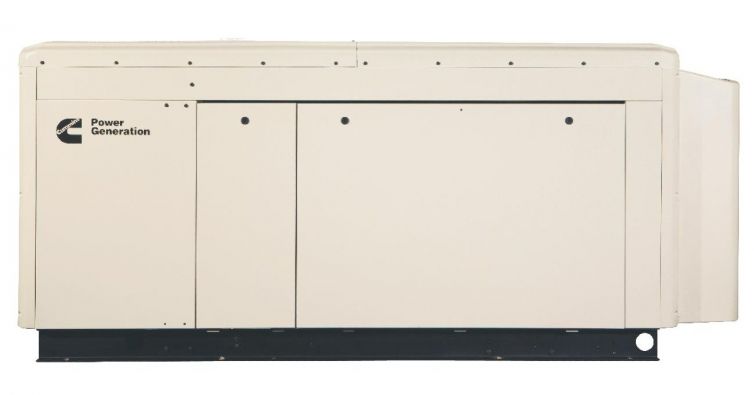
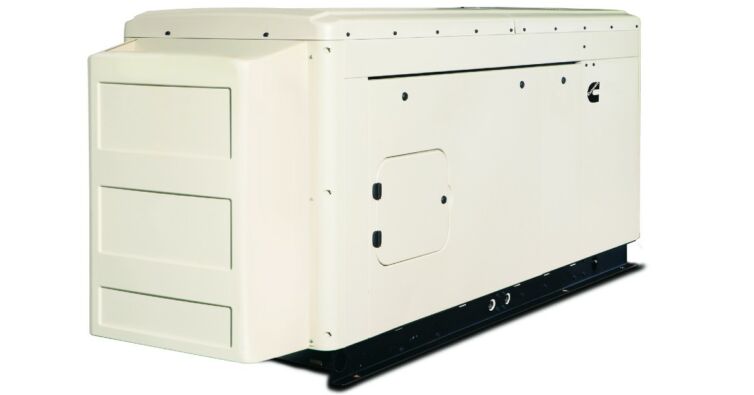
SKU: A051Y399


SKU: A051Y400


SKU: A051Y239


SKU: A051Y401
Recommendations for home generator maintenance
As we have previously mentioned, the maintenance of your home generator and its associated costs is crucial part to consider before the purchase.
For all standby generator maintenance, it is important to follow the manufacturer’s recommendations. Proper maintenance should only be performed by trained and qualified personnel. The example diesel generator checklist in table below provides recommended actions and associated frequencies by standby generator component type. This checklist serves to inform you on the points of well-managed maintenance, yet it s not a substitute for the manufacturer’s maintenance recommendations, nor does it replace contracted O&M or warranty services. For maintenance related to additional ancillary components, such as built-in engine heaters, please refer to the equipment owner’s manual.
Standby generator maintenance checklist.
Component | Action | Maintenance Frequency | |||
Weekly | Monthly | Bi-Annually | Annually | ||
Electric Generator | Run generator with no load for several minutes until operating temperature is achieved; verify control function and look for alarms, warnings, or indicator lights. | X | |||
Inspect engine, radiator, and generator for debris, as well as for loose or broken fittings, hoses, wires, and guards. | X | ||||
Run the system for 1 hour under a full building load initiated by ATS. Record the system operating parameters (e.g., coolant temperature, oil pressure, battery voltage, and generator alternating current voltage). | X | ||||
Perform load bank test. | X | ||||
Fuel System | Check fuel tank to assure levels are adequate and, if present, drain water from filter bowl. | X | |||
Assure there are no fuel or other fluid leaks. | X |
|
|
| |
Inspect accessible areas of fuel tank for damage and corrosion. Verify that emergency vent components move freely and are not obstructed (all tanks). | X | ||||
Replace fuel filter(s). |
|
|
| X | |
Inspect fuel hose, replace if necessary. |
|
|
| X | |
Lubrication System | Check oil level and inspect system components for leakage. | X | |||
Sample oil. |
|
| X |
| |
Grease generator bearing (if applicable). | X | ||||
Replace oil and oil filter (based on oil sample results) and inspect system components. |
|
|
| X | |
Replace engine oil hoses if necessary. |
|
|
| X | |
Cooling System | Inspect hoses and belts, replacing if needed, and verify that the engine block heater is operating properly. | X | |||
Check engine coolant level. |
| X |
|
| |
Check coolant lines and connections. |
|
| X |
| |
Check coolant condition with kit/test strip, replace if needed. |
|
|
| X | |
Inspect and adjust belts, verify engine block heater is operating, check radiator cap (replace cap if gasket is cracked or damaged), clean exterior of radiator, inspect fan shroud, and inspect system components. |
|
|
| X | |
Starting System | Assure that the generator is in “Auto” mode for automatic start-up. | X | |||
Clean battery connections and apply corrosion inhibitor. Check starter motor and charger connections and inspect system components. | X | ||||
Check battery electrolyte level and specific gravity. |
|
| X |
| |
Inspect and clean engine speed timing sensor. |
|
|
| X | |
Exhaust System | Perform visible emissions observation. | X |
|
|
|
Clean crankcase breather and inspect system components. | X | ||||
Inspect exhaust system, muffler, and exhaust pipe. | X | ||||
Electrical System | Check that the generator’s circuit breaker is closed. | X |
|
|
|
Clean out electrical boxes, panels, and alarm boxes. Inspect wiring. |
|
| X |
| |
Inspect and clean ATS contacts and wiring. | X | ||||
Inspect air intake system. Replace filter if needed. | X | ||||
System Documentation | Record all run hours. | Upon activity completion | |||
Document all maintenance activities in log book or electronic computerized maintenance management system. | Upon activity completion | ||||
Depending on the age and type of control system available, a newly manufactured standby generator can be monitored through an automation system whereby critical parameters are captured, tracked and trended. These metrics can include hours of operation, exhaust temperature, composition, and fuel rate. This allows practical monitoring of the main operating variables and implementation of the maintenance recommended by the manufacturer.
At Brags & Hayes we work to guarantee you the best prices on the market, the best pre-sales service and the best after-sales service so your investment in energy is operational over time. Remember, it’s not simply buying a generator. It matters that you buy what suits your needs and how you maintain it.
If you need to buy a quality standby generator or a whole house generator, at the best market price and with the best technical support, here is a list of generators that you can buy in our web store!
Standby Generators in Brags & Hayes Online Store
SKU: PA-GEN50-2003
SKU: PA-PRO64-3102
SKU: PA-GEN50-3102
SKU: PA-PRO64-2002


